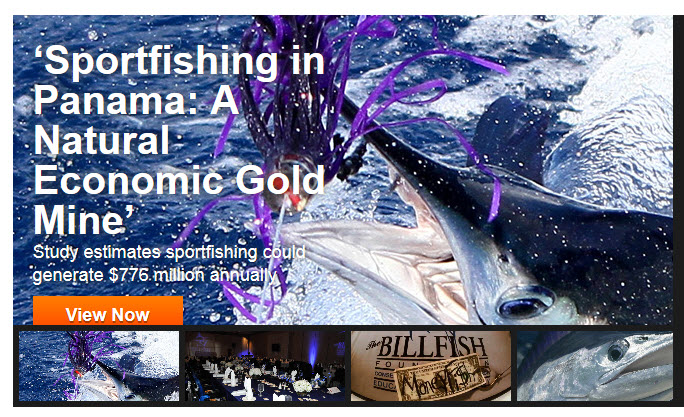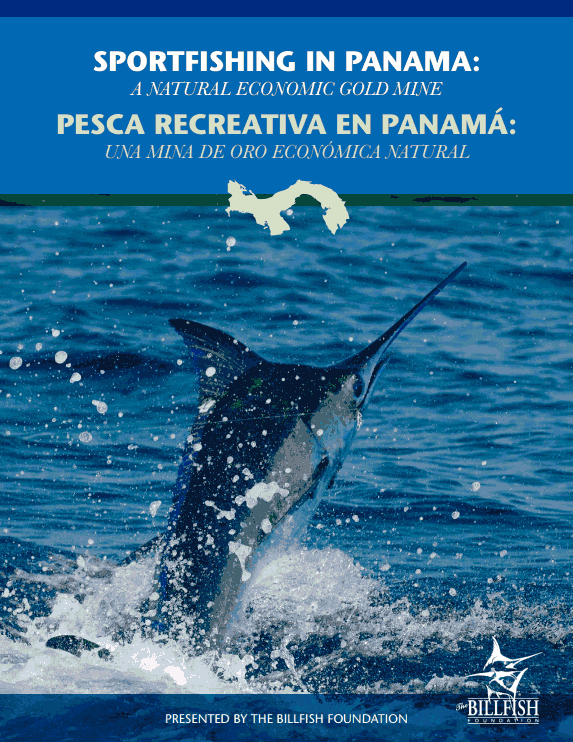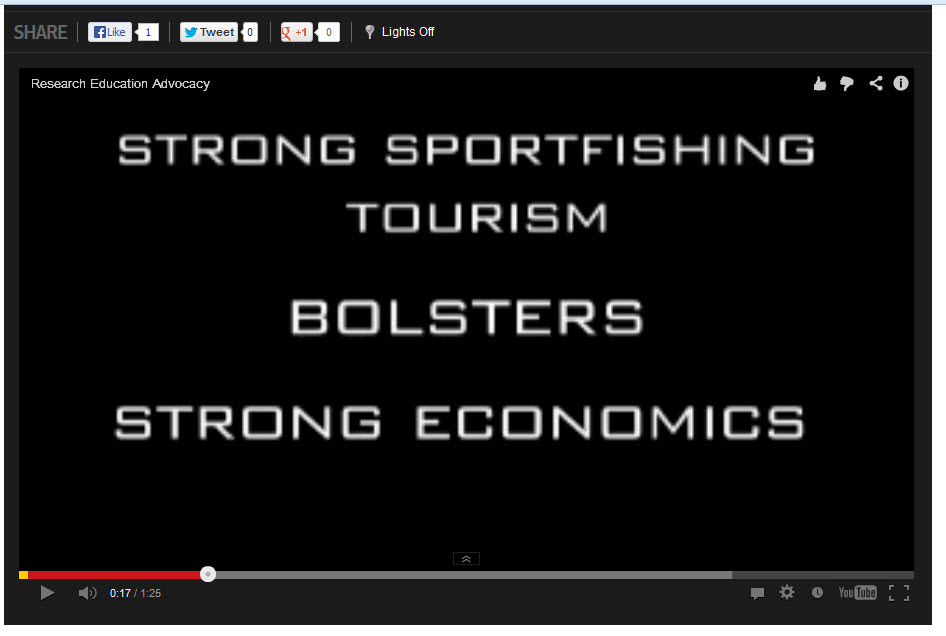While you read this article I will be contributing my share to the industry here in Panama. More next week!!
Here is a great report recently released by the Billfish Foundation.
FORT LAUDERDALE, Fla. – A report released today by The Billfish Foundation (TBF) reveals that sportfishing has been a major factor in attracting tourists to Panama providing a valuable fishing-based economic lift to the country. In 2011 (most recent data), 86,250 visitors fished in Panama. Those anglers and the rest of their travel companions spent $97 million on charter boats, fuel, food, lodging, and other related expenses. The number of anglers visiting Panama has doubled from 2001 to 2011 and the surge could only be the beginning, provided that fishing remains great and consumers are made aware of it. For every U.S. angler that has visited the country, eight more are interested in Panama as a fishing destination. If each interested angler was enticed into visiting, it could translate into an additional $776 million for the Panamanian economy. The study, entitled “Sportfishing in Panama: A Natural Economic Gold Mine,” was conducted by Southwick Associates with critical on-the-ground support from Vista Group-Panama, OCEARCH, and TBF Scientist Dr. Russell Nelson, and was funded by Panamanian government agency SENACYT.
Sportfishing tourism annually provides Panama with:
• $97 million new dollars via spending by visiting anglers.
• $170.4 million in total retail and business-to-business sales within Panama.
• 9,503 Panamanian jobs.
• an increase in Gross Domestic Product of US $48.4 million.
“This boom in tourism in Panama is really no surprise. Panama’s wonderful climate, natural beauty, and amazing beaches alone are major attractions, but one in four tourists that fished visited Panama JUST to fish,” said Ellen Peel, the President of TBF. “It is paramount, though, that governmental agencies continue to focus on implementing responsible management and conservation measures for marine fisheries and continue to restrain foreign purse seine and local longline vessels for the benefit of billfish and all species. If managed correctly, Panama’s sportfishing sector will become an even bigger cash-cow for Panama’s tourism economy.“
The survey asked U.S. anglers why they choose to fish in some countries but not others. Beyond the excellent fishing, Panama scored high among surveyed anglers regarding the reasonable cost of travel, safety, and availability of quality charter boats. In fact, 87 percent of the anglers surveyed were “satisfied” or “very satisfied” with their trips. This bodes extremely well for Panama tourism because 68.5 percent of people choose a vacation destination based on friends or family recommendations. Because people leaving Panama have such a high rate of satisfaction, word-of-mouth between friends and family will drive even more people to the country.
“For every 10 sportfishing visitors to Panama, another Panamanian job is supported,” Peel said. “But to continue to add to these jobs, Panama needs to maintain top notch fishing, which requires an abundance of fish in the water that comes from good management and strong, well-enforced fisheries regulations. Anglers reported they favor fishing destinations that tightly and effectively control commercial and recreational harvests. Panama needs to communicate that they are on board with these tourism-driving factors.”
Ms. Peel went on to add, “This study emphasizes that, if Panama wants to grow sportfishing tourism, improvements to Panama’s infrastructure and services must be made based on fishery science and strong economic and conservation policies. By looking at the experience in other countries, poorly planned and managed fisheries will lead to less employment, not more.”
To view and download the Summary Report seen above, Click Here
To read the full Technical Report, Click Here
The Billfish Foundation – Who We Are
HISTORY
The Billfish Foundation (TBF) was founded in 1986 with a mission of conserving billfish worldwide by the late Winthrop P. Rockefeller along with Tim Choate, Dr. Eric Prince and a group of fifty founding members. TBF’s keystone program, the traditional tagging program, was begun in 1990. Today, it has grown to be the largest international billfish tagging program in the world.
TBF’s initial focus was on research and educational programs. In 1990, TBF’s focus was expanded to include advocacy for responsible fisheries management, recognizing that influencing decision makers with sound science was a crucial step in successful billfish conservation.
The Billfish Foundation is a not-for-profit 501(c)(3) organization.
ACCOMPLISHMENTS
The Billfish Foundation is recognized globally and has continued to distinguish itself from other fish conservation organizations through sustained emphasis on synthesizing science and policy into effective, yet reasonable, fishery management solutions- solutions that are good for the fish but not punitive to recreational anglers.
Since its inception, TBF has been central to the following:
- Advancement and improvement of stock assessments for Atlantic and Pacific billfish;
- Transition of the recreational billfish fishery to catch/tag/release;
- Management and conservation regulations that prohibit the commercial retention and sale of Atlantic billfish in the U.S.;
- Socio-economic studies to establish a value for billfish species left alive in the water;
- Scientific conference that brought scientists from around the world to focus on the role billfish serve in the ecosystem;
- Area closed to longline gear to protect crucial nursery habitat for fish and sea turtles;
- Adoption of the use of non-offset circle hooks;
- Prohibition of the commercial retention and sale of marlin in Peru;
- Agreement with Central American nations to develop a comprehensive management plan for billfish and other species that migrate throughout the eastern Pacific region;
- Advancement of stock assessment methodology science for all highly migratory fish (TBF leads the world in this research);
- Development and maintenance of the world’s largest, most comprehensive private international billfish database;
- Implementation of regulations moderating the commercial tuna and swordfish longline and purse seine vessels, which represent a major source of billfish mortality;
- Assessment of marine habitat in both the Atlantic and Pacific Oceans that are oxygen depleted; and
- In March, 2010, TBF was empowered to develop a recreational fishing data collection system within the seven Central American countries of the Panamanian Isthmus.


